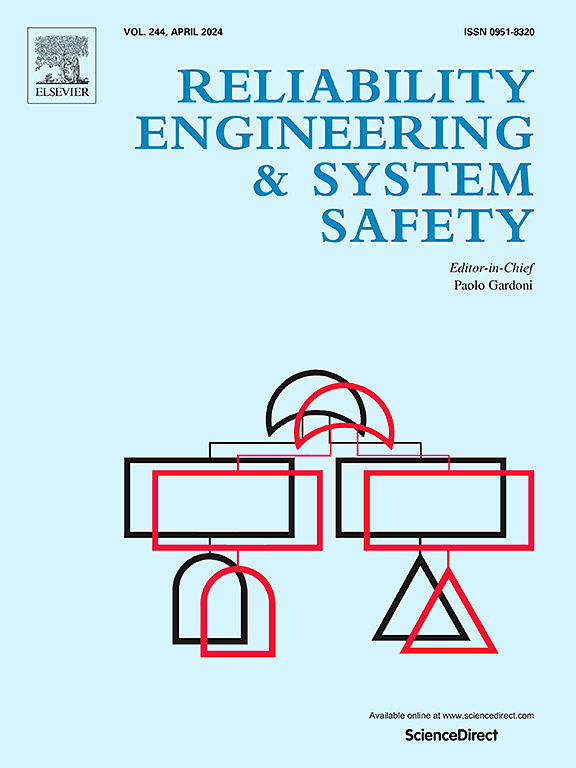Optimal test termination time in reliability growth management for systems with multiple failure modes
IF 9.4
1区 工程技术
Q1 ENGINEERING, INDUSTRIAL
引用次数: 0
Abstract
Reliability growth management is the positive improvement in a reliability metric due to implementation of corrective actions upon system design, operation or maintenance process through a dedicated test-analyze-and-fix (TAAF) procedure. Taking the reliability of a complex system is in fact a multidimensional outcome which is a function of various failure modes into account, the mixed-AMSAA model is constructed in this current research based on the mixed Weibull distribution. The parameters in the mixed-AMSAA model are estimated based on the Weibull probability plot (WPP) in the presence of limited failure data and the goodness-of-fit is tested with the Kolmogorov–Smirnov (K-S) statistic. To determine the optimal termination time of the reliability growth test plan for systems with multiple failure modes, a joint optimization framework under the planing objective of minimizing the total cost by considering the release time in terminating the reliability growth test and the quantity of spare parts inventory for corrective actions is proposed. Numerical solutions to the joint optimization model are theoretically analyzed and two cases from real engineering systems are validated to verify the proposed model. Illustrative results show that the mixed-AMSAA model is capable to capture the growth characteristic of systems with multiple failure modes and is effective in determining the optimal termination time of a reliability growth test program.
多故障模式系统可靠性增长管理中的最优试验终止时间
可靠性增长管理是通过专门的测试分析和修复(TAAF)程序,在系统设计、操作或维护过程中实施纠正措施,从而对可靠性指标进行积极改进。考虑到复杂系统的可靠性实际上是一个多维结果,是各种失效模式的函数,本研究基于混合威布尔分布构建了混合amsaa模型。在存在有限失效数据的情况下,基于威布尔概率图(WPP)估计混合amsaa模型的参数,并使用Kolmogorov-Smirnov (K-S)统计量检验模型的拟合优度。为确定多故障模式系统可靠性增长试验计划的最优终止时间,提出了以总成本最小为规划目标,考虑可靠性增长试验终止时间和纠正措施备件库存数量的联合优化框架。对联合优化模型的数值解进行了理论分析,并通过两个实际工程实例验证了该模型的正确性。算例结果表明,该混合amsaa模型能够很好地反映多失效模式系统的生长特性,能够有效地确定可靠性生长试验程序的最佳终止时间。
本文章由计算机程序翻译,如有差异,请以英文原文为准。
求助全文
约1分钟内获得全文
求助全文
来源期刊

Reliability Engineering & System Safety
管理科学-工程:工业
CiteScore
15.20
自引率
39.50%
发文量
621
审稿时长
67 days
期刊介绍:
Elsevier publishes Reliability Engineering & System Safety in association with the European Safety and Reliability Association and the Safety Engineering and Risk Analysis Division. The international journal is devoted to developing and applying methods to enhance the safety and reliability of complex technological systems, like nuclear power plants, chemical plants, hazardous waste facilities, space systems, offshore and maritime systems, transportation systems, constructed infrastructure, and manufacturing plants. The journal normally publishes only articles that involve the analysis of substantive problems related to the reliability of complex systems or present techniques and/or theoretical results that have a discernable relationship to the solution of such problems. An important aim is to balance academic material and practical applications.
 求助内容:
求助内容: 应助结果提醒方式:
应助结果提醒方式:


